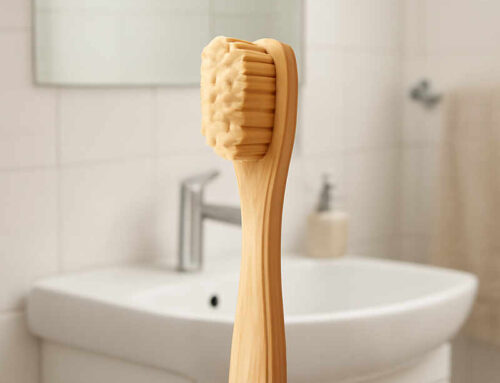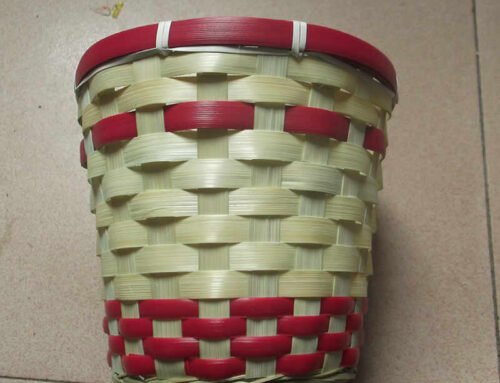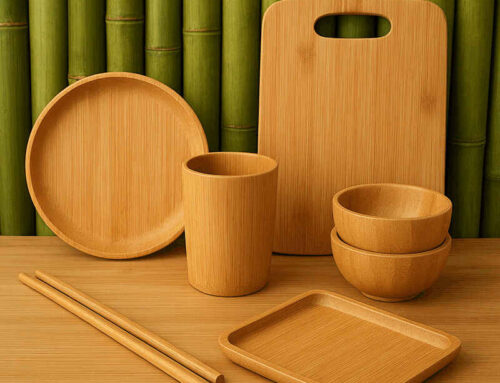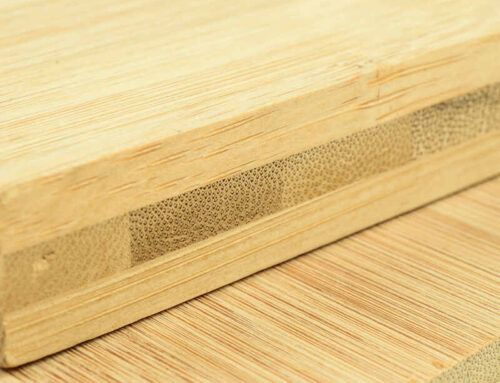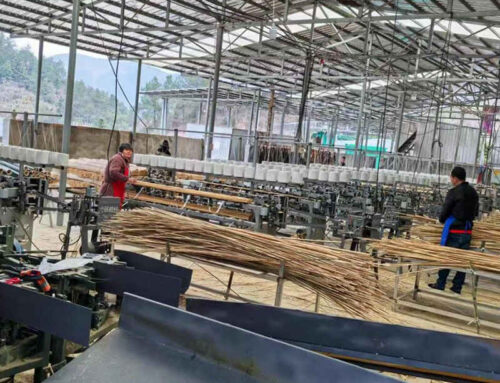Walk into any kitchenware store, and you’ll be faced with a classic dilemma: we should buy the charming, traditional solid wood cutting board or buy the sleek, modern bamboo cutting board as an alternative? Both promise durability and a natural cooking experience, but they are totally different. Choosing between them isn’t just about aesthetics; it’s about performance, hygiene, and sustainability.
So, in the ultimate showdown of bamboo vs. wood, who emerges as the champion for your kitchen? Let’s slice through the hype and get to the grain of the matter.
Round 1: The Identity Crisis – Grass vs. Tree
First, let’s clear up a common misunderstanding. Bamboo is not a wood; it’s a grass. This single fact is the root of all the differences we’ll explore. Wood comes from the slow, dense growth of trees, while bamboo is a fast-growing hollow grass that reaches maturity in 3-5 years. The moso bamboo can grows 30-100cm each single day.
- Solid Wood: Think maple, walnut, teak, or acacia. These are hardwoods, known for their tight grain and density.
- Bamboo: The “bamboo” used in kitchen products is typically strands or fibers of the grass stalk, compressed with a strong adhesive (like urea-formaldehyde or less-toxic alternatives) under high heat and pressure to form solid boards.
This fundamental difference in biology dictates everything from hardness to environmental impact.
Round 2: Hardness & Knife Friendliness
This is perhaps the most key round for your precious chef’s knives.
Bamboo: The Tough Contender
Because of its dense,laminated structure, bamboo is exceptionally hard. On the Janka hardness scale (which measures wood’s resistance to wear and tear), bamboo often has higher scores than many common hardwoods like maple. This means:
- Pros: Highly resistant to scoring and scratching. It won’t show knife marks as easily as a softer wood, maintaining a smooth appearance for very long time.
- Cons: This extreme hardness is a double-edged sword. It can be brutal on knife edges. The tough surface causes micro-chipping and dulling of your blades much faster than a properly maintained wood board. If you have a high-quality, sharp knife, a bamboo board is their nemesis.
Wood: The Gentle Giant
Solid wood boards,particularlly those made from hardwoods like maple or cherry, have a perfect balance of density and give.
- Pros: The wood fibers are slightly self-healing. When you cut on them, the knife edge slides between the fibers, which then close up slightly. This is far gentler on your knives, keeping them sharper for longer. A sharp knife is a safe knife, making this a key advantage for serious cooks.
- Cons: Softer woods will show cut marks more readily, developing a “patina” of use over time. Some think this as character; others see it as wear.
Winner: Wood. For the longevity and sharpness of your knives, a quality end-grain or edge-grain wood board is the Indisputable champion.
Round 3: Moisture & Hygiene – The Battle Aganist Bacteria
A cutting board’s ability to resist water and bacteria is the most important thing for food safety.
Bamboo: The Naturally Mighty (But Imperfect) Warrior
Bamboo has a natural antimicrobial agent called “bamboo kun.” This bio-agent helps the grass resist fungi and bacteria in the wild world.
- Pros: This natural character gives bamboo advantage in fighting microbial growth. Its tight, laminated surface also leaves less room for bacteria to pool compared to a deeply scarred wood board.
- Cons: Here’s the catch: the construction process can undermine this advantage. Many bamboo boards are bound with adhesives which can be susceptible to water damage over time. If water seeps into the seams, it can cause the board to warp, crack, or delaminate, creating hidden pockets for bacteria to grow. Besides, its high hardness means deep cuts are less likely, but if they do happen, they are not easy to clean properly.
Wood: The Surprising Sanitizer
For years, plastic was thought as the most hygienic choice, but scientist said that wood, particularly hardwoods, has a hidden talent.
- Pros: Wood is hygroscopic—it actively draws moisture into its core. When bacteria comes from raw chicken, for instance, end up on a wood board, they are pulled into the board’s capillaries and trapped. Once inside, they die off, unable to reproduce on the dry surface below. Researchs, including a famous one from the University of Wisconsin, have shown that wood boards have natural antibacterial characters that can outperform plastic.
- Cons: Wood requires more diligent maintenance. If left wet, it can warp and crack, and the repeated wet-dry cycle can break down the fibers over time. It is also more porous when new and requests a mineral oil treatment to create an effective moisture barrier.
Winner: It’s a Draw, with an asterisk. Bamboo has a natural antimicrobial agent, but its construction has advantages. Wood has proven, science-backed antibacterial capabilities but demands consistent care. Proper cleaning and drying are more important for both than the material itself.
Round 4: Durability & Maintenance – The Long Haul
How will your board look and perform in five years?
Bamboo: The Resilient but Brittle Fighter
Bamboo’s hardness makes it very resistant to daily wear and tear. It’s less prone to denting and doesn’t develop deep grooves easily.
- Pros: Durable surface, often dishwasher safe for smaller utensils (though hand washing is still recommended to preserve the adhesive).
- Cons: Its Achilles’ heel is moisture and heat. Long time exposure can cause warping, cracking, or the layers to separate. Dropping a heavy bamboo board on a hard floor can sometimes cause it to split along the laminated lines.
Wood: The Classic That Ages with Grace
A well-made wood board is a lifetime investment.
- Pros: Incredibly durable when cared for properly. It can be sanded down to remove cuts and scratches, essentially giving it a new lease on life every few years. An end-grain wood board is especially forgiving on knives and self-healing.
- Cons: High cost for maintenance. It needs regular oiling (with food-grade mineral oil) to keep the wood fibers nourished and water-resistant. It should never be soaked or put in a dishwasher. It’s heavier and often more expensive upfront.
Winner: Wood. While requiring more maintenance, a wood board’s ability to be refurbished and its overall longevity make it the more durable option in the long run.
Round 5: Sustainability – The Eco-Conscious Choice
This is where bamboo truly shines.
Bamboo: The Green Supergrass
Bamboo is a sustainability superstar. It’s the fastest-growing plant on planet, no need pesticides, and self-regenerates from its root system, so it doesn’t need to be replanted after harvest. It sequesters carbon and helps build eroded soil again.
- Caveat: The environmental cost of transportation (usually from Asia) and the type of adhesive used in manufacturing can offset some of these benefits. We should look for brands that use formaldehyde-free glues.
Wood: The Responsible Classic
The sustainability of wood depends totally on its source.
- Pros: Wood is a renewable resource. When sourced from responsibly managed forests certified by organizations like the FSC (Forest Stewardship Council), it is an good eco-friendly option.
- Cons: Hardwood trees need decades to mature. Irresponsible logging leads to deforestation and habitat destruction.
Winner: Bamboo. From a pure growth and regeneration standpoint, bamboo is the undisputed environmental champion.
The Verdict: And the Winner Is…
It depends on your priorities as a home chef.
You will choose BAMBOO if:
- You prioritize sustainability and a low environmental footprint.
- You want a hard, scratch-resistant surface that looks new for a long time.
- You are on a budget (bamboo is usually more affordable).
- You are not a professional cook and your primary concern is easy, low-maintenance and easy cleaning.
You will choose SOLID WOOD if:
- You are serious about keeping your knives sharp.
- You regard your cutting board as a long-term, investment-grade kitchen tool.
- You don’t mind regular oiling and maintenance
- You appreciate the natural beauty and character that develops with age.
In a word: For the professional chef, the cooking enthusiast, or anyone who values their knives, a solid wood board (especially end-grain) is the first choice. It’s kinder to your blades, has proven hygienic properties, and can last a lifetime.
However, bamboo makes a compelling case for the eco-conscious, budget-aware, or non-professional cook who wants a durable and naturally antimicrobial choice. It’s a fantastic grass that has earned its place in the modern kitchen room.
Finally, the best kitchen is one that works for you. Whether you choose the timeless charm of wood or the modern resilience of bamboo, both are natural, good choices that are far superior to plastic. Now, go forth and chop with confidence

